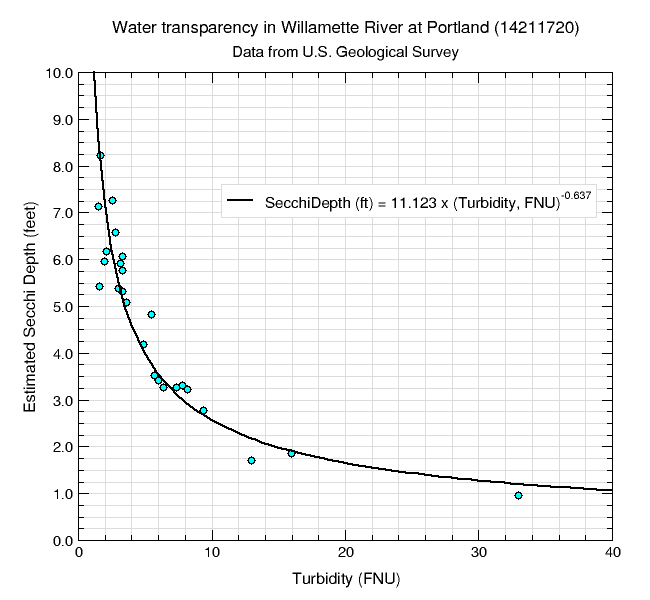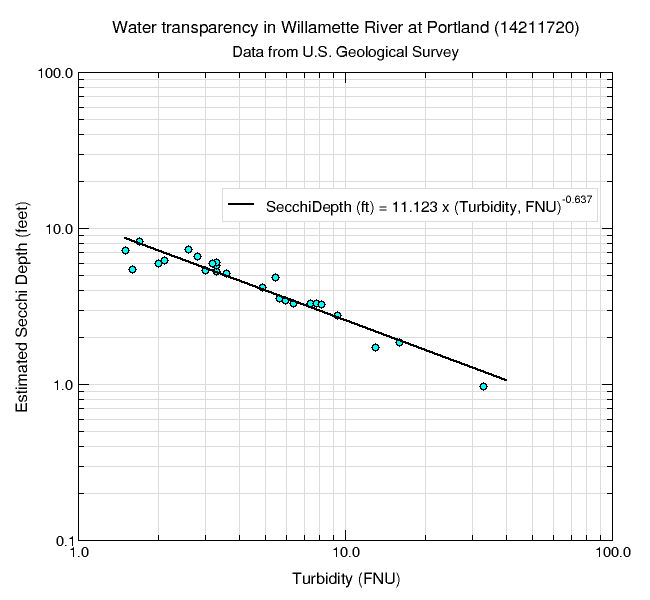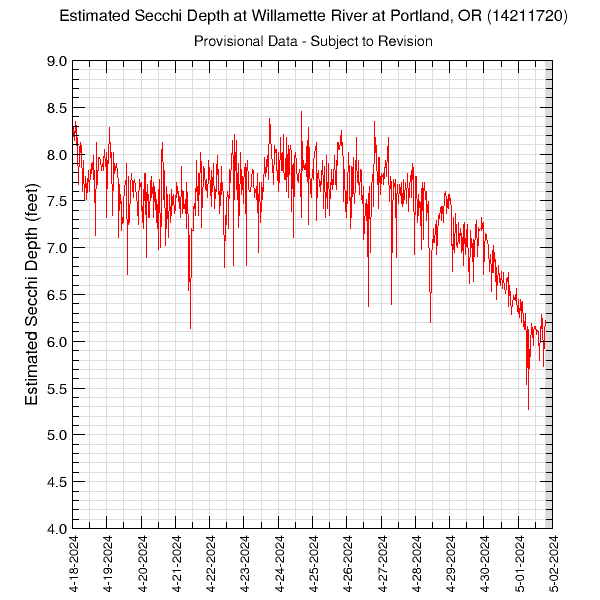Estimation of Secchi Depth from Turbidity Data
in the Willamette River at Portland, OR (14211720)
Secchi depth (pronounced seckky) is a measure of water transparency,
where transparency increases with increasing secchi depth. The
secchi depth
is the depth of water beyond which a high-contrast pattern on a submerged
disk is no longer visible.
Secchi depth (feet) can be estimated on the basis of measured turbidity
data. For the Willamette River at Portland site (14211720) located at
the Morrison Bridge in downtown Portland, OR, turbidity data are collected
every half hour. Measurements of the secchi depth near the monitor location
have been used to create a regression model of secchi depth as a function
of turbidity:
Secchi Depth = 11.123 x Tbdy ^(-0.637)
where Secchi Depth is in feet, Tbdy is turbidity in
FNU, the "x" is the
sympol for multiplication, and the "^" is the symbol for
exponentiation. This equation includes a bias correction factor of 1.01.
The regression model was developed in accordance with the methods
set forth in USGS Techniques and Methods, book 3, chapter C4 (see
http://pubs.usgs.gov/tm/tm3c4/),
using the
spreadsheet
that was developed originally to construct models of suspended sediment
concentration (SSC) as a function of turbidity. In this case, estimated secchi depth
was substituted for SSC in the spreadsheet to construct the model.
Twenty-five pairs of secchi depth and turbidity measurements in the
Willamette River at Portland from October 2012 through January 2014 were
used to construct this model. The following graphs show the data used to
create this model:


The real-time estimated secchi depth data based on measured turbidity
data that result from this model are shown in the graph below:

|